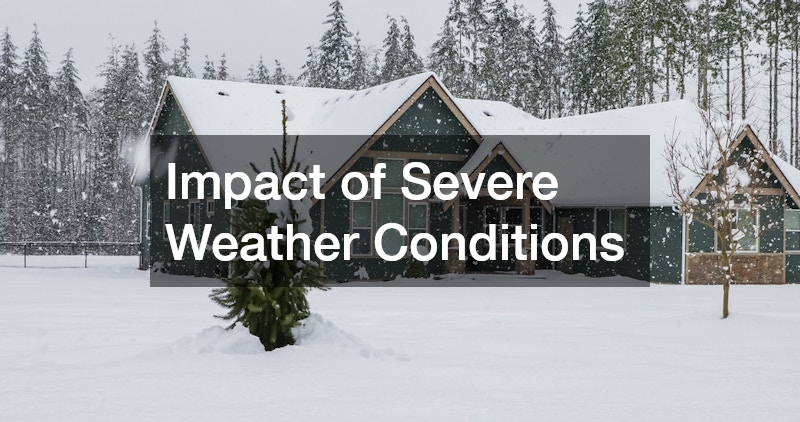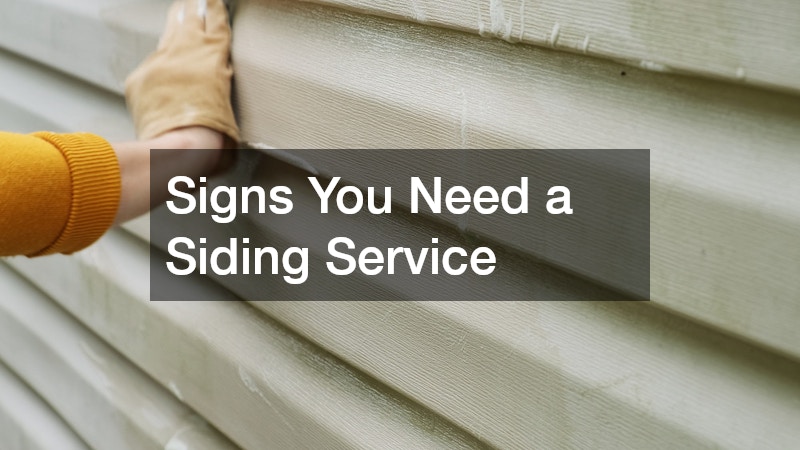Maintaining your home’s siding is crucial as it serves both aesthetic and functional purposes, acting as a barrier against the elements while enhancing curb appeal. Professional siding services become necessary when the siding becomes compromised, which can lead to further structural damage or energy inefficiencies. Identifying early signs of siding damage can save homeowners significant repair costs and maintain the value of their investment.
Damaged Siding
Visible Wear and Tear
Cracks, warping, or rotting are common visible indicators of siding damage that can lead to more serious structural issues if left unaddressed. Regular inspections can help identify these issues early, allowing for timely repairs or replacement. Homeowners should look for discolorations and peeling paint as additional signs that their siding may require professional attention.
Such visible damage is not only unsightly but can also expose the underlying layers of your home’s structure to environmental elements. Over time, these surfaces can be infiltrated by moisture, leading to mold growth and other forms of deterioration. Ensuring your siding is in good condition is a vital part of home maintenance that protects against such damage.
Moreover, addressing visible wear and tear promptly can prevent minor issues from escalating into major problems that demand extensive and costly repairs. Homeowners may face an increased risk of these problems if they live in regions with extreme weather conditions that put additional stress on exterior structures. Simple maintenance steps like repainting or sealing gaps can often prolong the life of siding materials, but sometimes professional intervention is necessary.
Unexpected Increases in Energy Bills
An unexpected increase in energy bills might be a sign that your siding’s insulating properties have been compromised. Properly functioning siding helps regulate indoor temperatures, keeping heating and cooling costs in check. If utility costs rise unexpectedly, it might indicate that your siding is no longer providing adequate insulation.
When siding fails, it can cause drafts and leaks, leading to heat loss in the winter and heat gain in the summer. This inefficiency places a heavier burden on HVAC systems, pushing them to work harder to maintain comfortable indoor conditions. Addressing siding issues can therefore contribute to reduced energy consumption and lower monthly expenses.
Homeowners should conduct a thorough examination of their exterior walls alongside an energy audit to diagnose the source of increased energy usage. An effective siding repair or replacement project can restore energy efficiency to its optimal levels. Choosing materials with better insulation capabilities during replacement can also offer long-term energy savings.
Neglecting Siding Maintenance
Water Damage and Mold Growth
Neglected siding can lead to water damage as rain infiltrates the home’s structure, promoting the growth of mold and mildew. As moisture seeps in, it not only damages the exterior but can also cause significant structural integrity issues within the home. These problems may necessitate extensive repairs to both siding and affected internal areas of the house.
Mold and mildew pose health risks by contributing to poor indoor air quality and can exacerbate respiratory issues. Addressing leaks and compromised siding quickly minimizes these health risks and prevents costly mold remediation processes. Prompt siding service enables homeowners to maintain a healthy and safe living space for their families.
Reduced Curb Appeal and Property Value
Damaged or outdated siding can significantly reduce a property’s curb appeal, affecting first impressions and potentially deterring potential buyers. Maintaining attractive and well-kept siding plays a crucial role in preserving and possibly enhancing property value. Neglecting siding care could result in a property being less competitive in the real estate market.
Realtors often emphasize the impact of curb appeal on sales, noting that it can make or break a potential sale. Homes that require visible repairs might signal to buyers that other areas of the home may also be neglected. Investing in quality siding maintenance or upgrades can positively influence the perceived value of a property.
Replacing Rather Than Repairing
Aging and Material Degradation
Over time, all materials undergo wear and tear, and siding is no exception. As siding materials age, they may no longer offer the protection and insulation they once did, necessitating replacement. Homeowners should note that siding typically lasts between 20 to 40 years, depending on the material and environmental conditions.
Signs that siding has reached the end of its lifespan include frequent repairs, paint peeling, and pervasive warping. Older siding materials may not offer the same energy efficiency or appeal as newer options, making replacement a worthy investment. Choosing durable replacement materials can prolong the period before the next major exterior project is required.
Impact of Severe Weather Conditions
Severe weather conditions can result in irreparable damage to siding, prompting the need for a complete replacement rather than patchy repairs. Structurally compromised siding due to storms, hail, or high winds often necessitates urgent professional attention to prevent further damage. Prompt replacement after severe weather events can safeguard a home’s structural integrity.
Natural disasters may leave siding with visible holes, extensive cracks, or widespread water damage. These issues often leave the home exposed and vulnerable to additional problems, including pest infestations or water leaks. Addressing weather-induced siding damage swiftly helps keep homes secure and shields them from further environmental threats.
The importance of timely siding services cannot be overemphasized, as visible damage, increased energy costs, and reduced curb appeal are critical indicators that should not be neglected. Maintaining or replacing siding ensures that homeowners protect their investments, reduce energy consumption, and preserve property value. Taking swift action to repair or replace siding prevents escalating damage, ensuring lasting protection, aesthetic enjoyment, and financial prudence.




